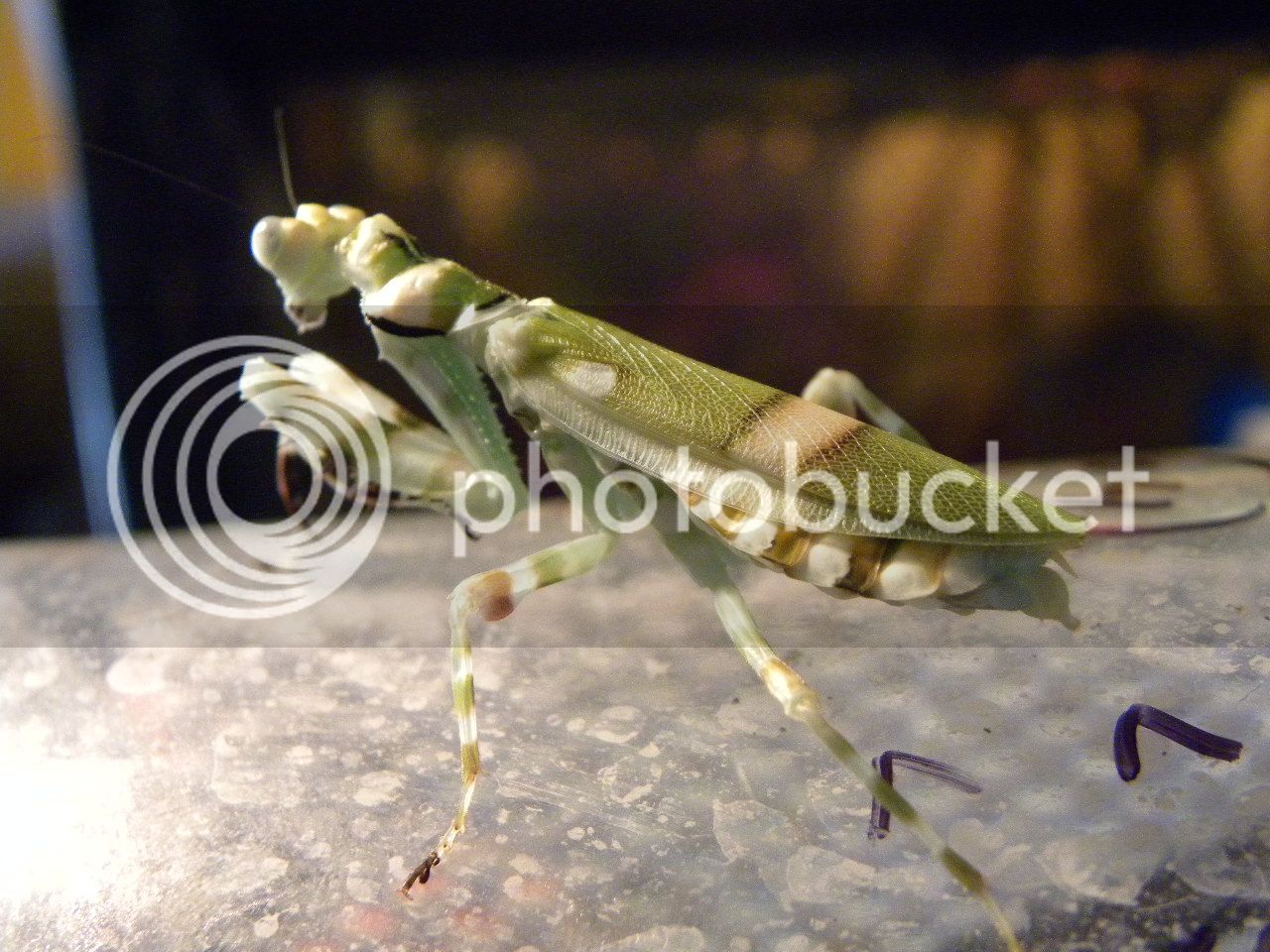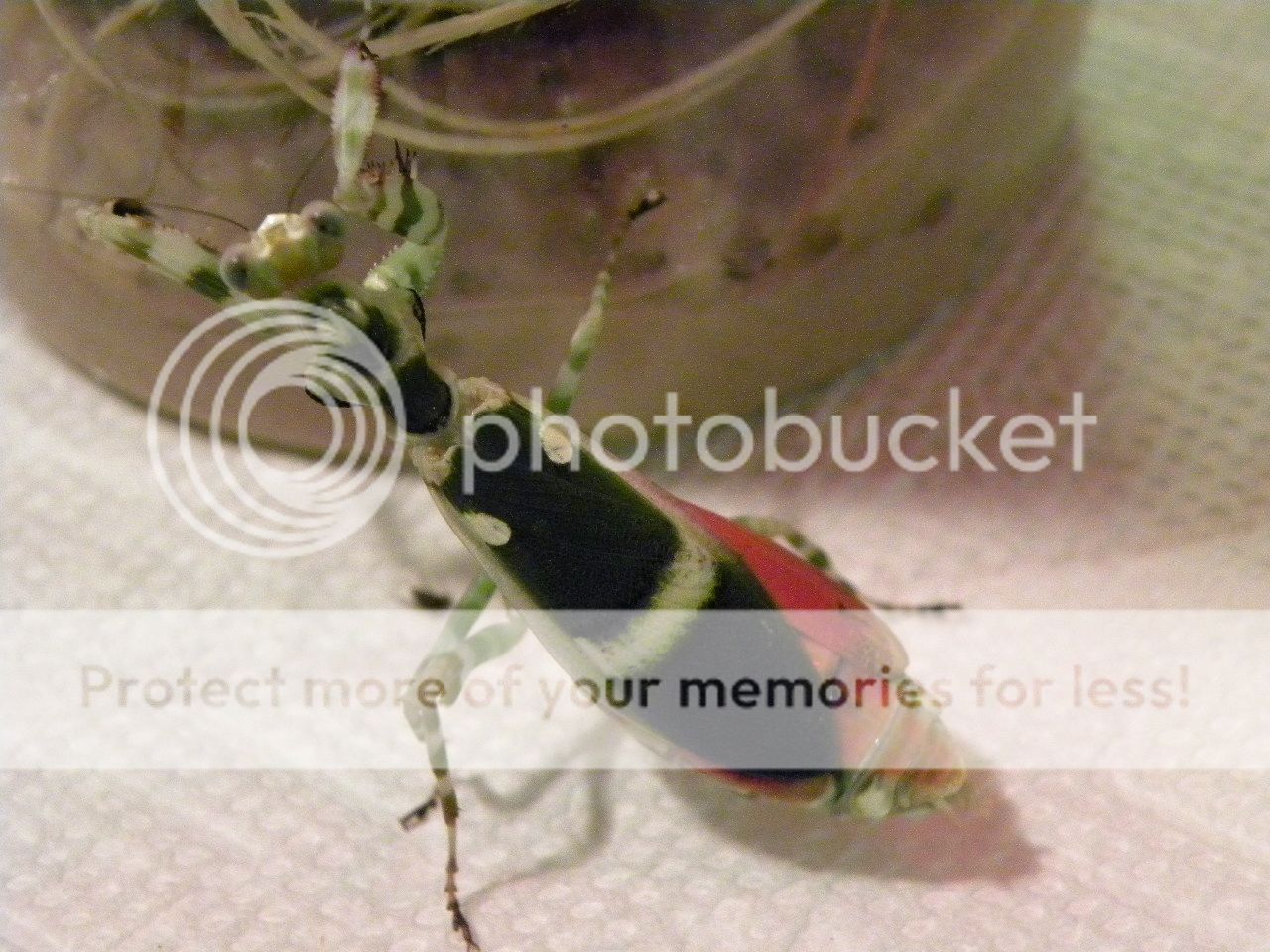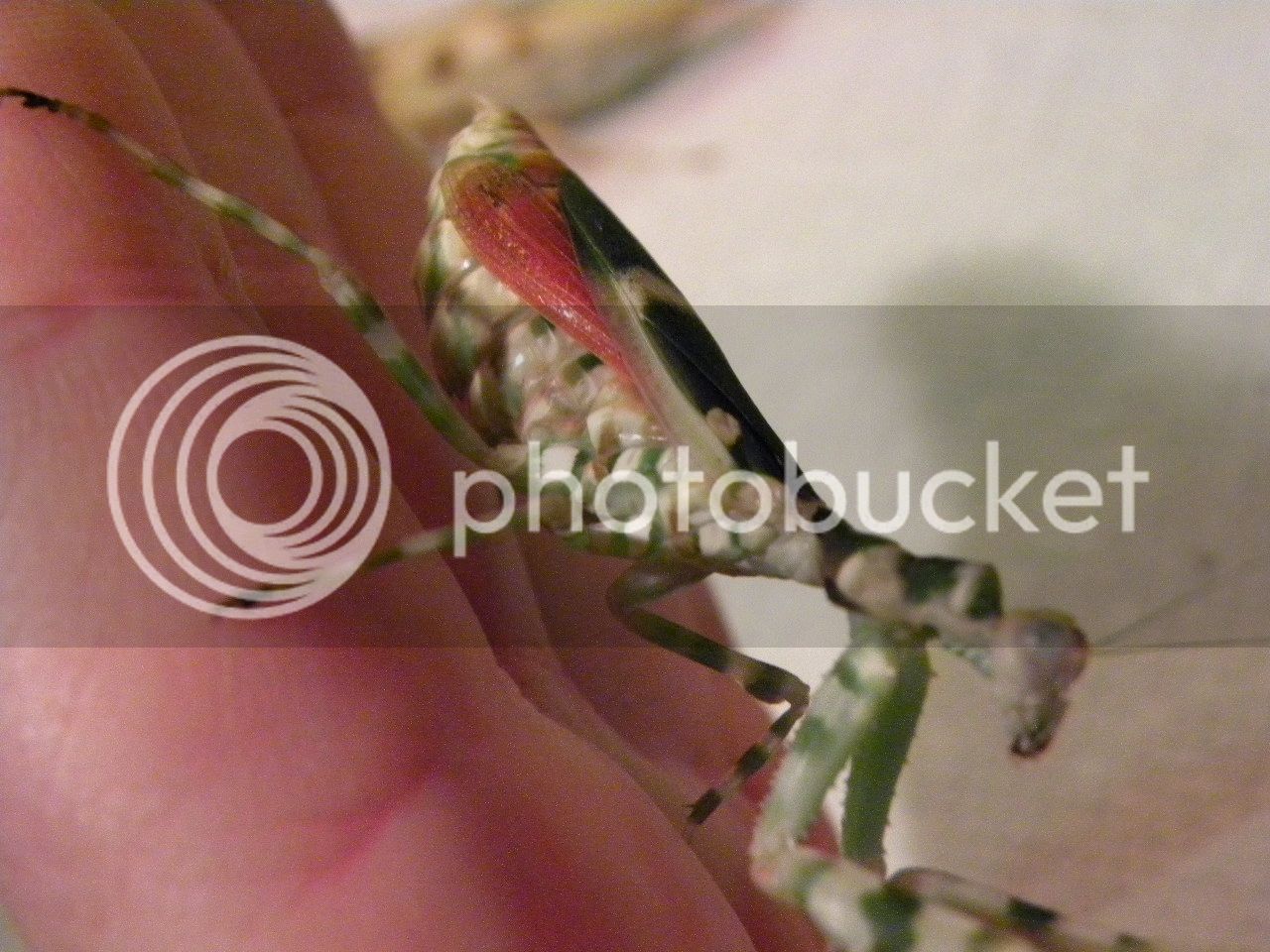Chiniensis
Well-known member
Theopropus elegans is back in season in the Cameron Highlands and quite common at the moment. The normal green and white form is easily found but I managed to get a couple of dark pink forms.
Is the colour variation genetic or due to the environment? In South Africa I used to find two very distinct forms of Harpagomantis tricolor - the normal pink and green version, as well as an unusual yellow and green form. Both forms lived within 100 yards of each other, so they were physically too close for it to be genetic isolation. . The pink form was only on found purple flowers and the yellow form only on yellow flowers, leading to the conclusion that as the nymphs grew they took on the colour of the flowers. The same is often seen in butterfly pupae being brown on brown backgrounds/green on green, etc.
Typically, the green and white version is found on clusters of small blue flowers but I can't say on what colour flowers these were found. Maybe on the next trip?
David

Is the colour variation genetic or due to the environment? In South Africa I used to find two very distinct forms of Harpagomantis tricolor - the normal pink and green version, as well as an unusual yellow and green form. Both forms lived within 100 yards of each other, so they were physically too close for it to be genetic isolation. . The pink form was only on found purple flowers and the yellow form only on yellow flowers, leading to the conclusion that as the nymphs grew they took on the colour of the flowers. The same is often seen in butterfly pupae being brown on brown backgrounds/green on green, etc.
Typically, the green and white version is found on clusters of small blue flowers but I can't say on what colour flowers these were found. Maybe on the next trip?
David





















































